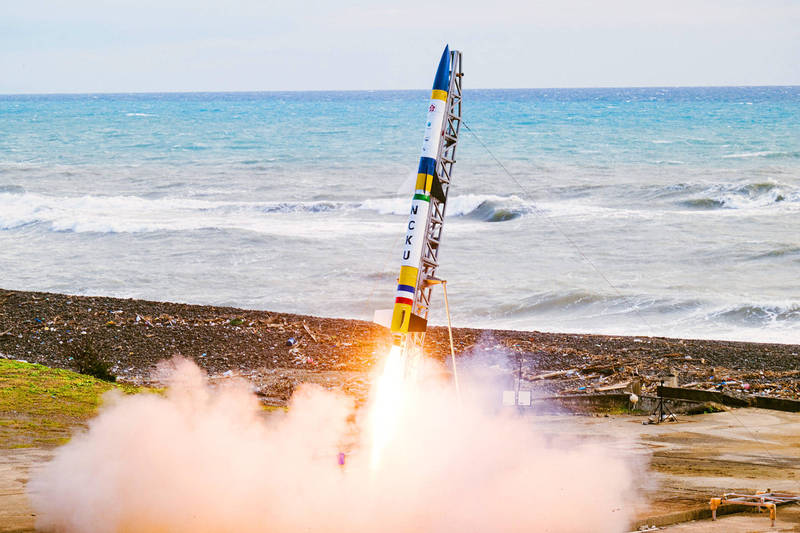《TAIPEI TIMES》 Council hails successful test flight of NCKU rocket

A two-stage hybrid rocket is launched from a test site in Pingtung County’s Mudan Township yesterday. Photo courtesy of the National Space Organization
/ Staff writer, with CNA
Researchers at National Cheng Kung University (NCKU) yesterday conducted a successful test flight in Pingtung County of a two-stage rocket using a hybrid propulsion system.
The 6.2m, 260kg rocket was launched at a National Space Organization (NSPO) test site in Mudan Township (牡丹) at 6:47am, the National Science and Technology Council said in a statement.
The launch tested the rocket’s hybrid propulsion system, which uses a mix of liquid and solid-state propellants, the council said.
Under the initial flight plan, a 1,500kg force of thrust was achieved in the liftoff phase, which propelled the rocket into the sky for 13 seconds before a 300kg-force thrust booster kicked in during the separation phase.
However, the propulsion time and the accomplished altitude are to be determined after a review of the results, the council said.
The test represented the first launch of a hybrid rocket by a Taiwanese academic institution that utilized a two-stage thrust of 1,500kg force and 300kg force, it said.
It is hoped that the Tainan-based university’s hybrid rocket can be modified to carry payloads for scientific research in the near future, the NSPO said.
NCKU Department of Aeronautics and Astronautics chair professor Chao Yi-chin (趙怡欽) said the propulsion system was based on the university’s 1,500kg-force thrust technology developed in 2019, but had been further refined after three years of research.
The key components and instruments used to make the rocket, regardless of design, technology and manufacturing, were sourced entirely in Taiwan, Chao said.
The rocket also features a built-in Compact Scintillator Array Detector (ComSAD) developed by NCKU Department of Physics associate professor Yang Yi (楊毅), he said.
ComSAD is a high-energy cosmic ray detector used in sounding rockets and cube satellites to detect the energy and direction of cosmic rays.
The sounding rocket launch yesterday was also used to test the basic functions of the ComSAD for future missions, the council said.
新聞來源:TAIPEI TIMES















